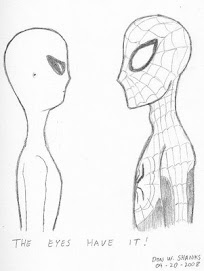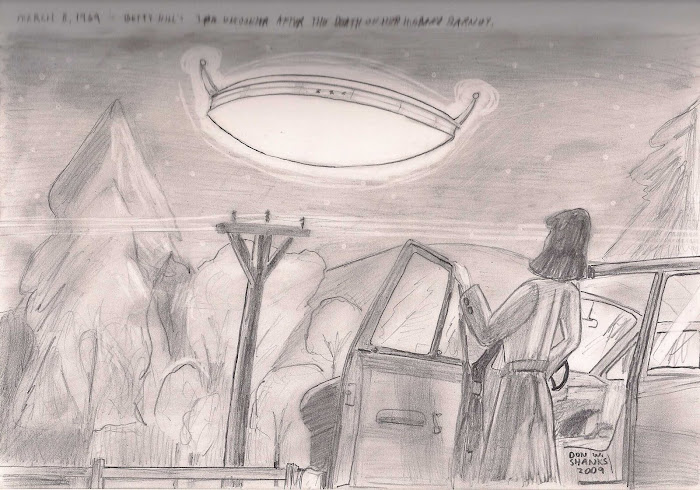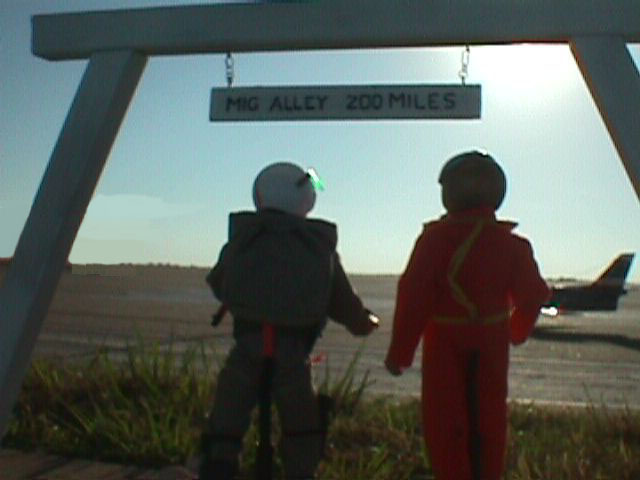
There was a recent article by Rossella Lorenzi posted on Discovery.com, about satellites discovering some new, buried pyramids in Peru. (ref. Discovery.com, “Ancient Peru Pyramid spotted by satellite” by Rossella Lorenzi. Posted on Oct 5, 2008).
Italian researchers of Italy's National Research Council (CNR) Nicola Masini and Rosa Lasaponara discovered the new sites by analyzing infrared and multispectral images from the Quickbird satellite which imaged the Cahuachi desert of Peru. They were looking at an area along the Nazca river. Now covered with plants and grass, the test area was about a mile away from a current archaeological site which contains the remains of what is believed to be the world's biggest mud city. Lorenzi's subtitle headline for this article was “ Infrared and multispectral images reveal 9,000-square-mile structure.”
Archaeologists already knew about some 40 mounds in the Cahuachi desert that they think cover more buildings. Masini told Discovery News the following: “We know that many buildings are still buried under Cahuachi's sands, but until now, it was almost impossible to exactly located them and detect their shape from an aerial view. The biggest problem was the very low contrast between adobe, which is sun-dried earth, and the background subsoil.”
Cahuachi is where the Nazca civilization flourished in Peru from the first century B.C., and the fifth century A.D. The Nazca civilization faded into oblivion and replaced by the Inca Empire which dominated the Andes of South America. Best known for the famous carvings of animals and birds that are best viewed from the air. The Nazca people built Cahuachi as a ceremonial center. The pyramids, temples, and plazas were molded from the desert itself. From these centers, Nazca priests conducted human sacrifices. The human subjects for these sacrifices being drawn in from the surrounding regions. What lead to the declined of the Nazca civilization where two natural disasters of a great flood and a earth quake. This is what lead scholars to believe lead to the abandonment of this site by its inhabitants. But before leaving, all the buildings where sealed up and buried under the desert sands.
Archaeologist Giuseppe Orefici, who has spent many years excavating the Cahuachi desert stated in the conference paper, “Up to the now, we have completely unearthed and restored a huge asymmetrical pyramid, known as the Grand Pyramid. A terraced temple and a smaller pyramid are in an advanced state of excavation.” The newly discovered pyramid that features a 300 by 328 foot base that consists of at least “four degrading terraces which suggest a truncated pyramid similar to the Grand Pyramid.” This pyramid was sculpted straight from the desert landscape with large adobe walls.
Another archaeologist Andrea Drusini from Padova University spoke with Discovery News about the Grand Pyramid. “This is an interesting finding. As with the Grand Pyramid, it is likely that also this pyramid contains the remains of human sacrifices.” In previous excavations at Cahuachi, Drusini found some 20 severed “offering heads” at various locations inside the Grand Pyramid. Each skull have circular holes cut into the forehead and were perfectly prepared from an anatomical point of view Drusini said.
Nicola Masini stated to Discovery News, “This innovative technology opens up new perspectives for the detection of buried adobe monuments in Cahuachi and elsewhere. Once we have more information about the size and shape of the structures, we might turn to virtual archaeology to bring the pyramid and its nearby structures back to life.”
If the reader is a avid viewer of the History, Discovery, National Geographic channels, etc. like I am; there are programs using CGI to bring these past civilizations back to life. I'll be looking forward to seeing these programs appear on the History Channel in a few years. I would also love to be able to actually travel to Peru to visit this site in person and to see the famous lines in the desert.
Italian researchers of Italy's National Research Council (CNR) Nicola Masini and Rosa Lasaponara discovered the new sites by analyzing infrared and multispectral images from the Quickbird satellite which imaged the Cahuachi desert of Peru. They were looking at an area along the Nazca river. Now covered with plants and grass, the test area was about a mile away from a current archaeological site which contains the remains of what is believed to be the world's biggest mud city. Lorenzi's subtitle headline for this article was “ Infrared and multispectral images reveal 9,000-square-mile structure.”
Archaeologists already knew about some 40 mounds in the Cahuachi desert that they think cover more buildings. Masini told Discovery News the following: “We know that many buildings are still buried under Cahuachi's sands, but until now, it was almost impossible to exactly located them and detect their shape from an aerial view. The biggest problem was the very low contrast between adobe, which is sun-dried earth, and the background subsoil.”
Cahuachi is where the Nazca civilization flourished in Peru from the first century B.C., and the fifth century A.D. The Nazca civilization faded into oblivion and replaced by the Inca Empire which dominated the Andes of South America. Best known for the famous carvings of animals and birds that are best viewed from the air. The Nazca people built Cahuachi as a ceremonial center. The pyramids, temples, and plazas were molded from the desert itself. From these centers, Nazca priests conducted human sacrifices. The human subjects for these sacrifices being drawn in from the surrounding regions. What lead to the declined of the Nazca civilization where two natural disasters of a great flood and a earth quake. This is what lead scholars to believe lead to the abandonment of this site by its inhabitants. But before leaving, all the buildings where sealed up and buried under the desert sands.
Archaeologist Giuseppe Orefici, who has spent many years excavating the Cahuachi desert stated in the conference paper, “Up to the now, we have completely unearthed and restored a huge asymmetrical pyramid, known as the Grand Pyramid. A terraced temple and a smaller pyramid are in an advanced state of excavation.” The newly discovered pyramid that features a 300 by 328 foot base that consists of at least “four degrading terraces which suggest a truncated pyramid similar to the Grand Pyramid.” This pyramid was sculpted straight from the desert landscape with large adobe walls.
Another archaeologist Andrea Drusini from Padova University spoke with Discovery News about the Grand Pyramid. “This is an interesting finding. As with the Grand Pyramid, it is likely that also this pyramid contains the remains of human sacrifices.” In previous excavations at Cahuachi, Drusini found some 20 severed “offering heads” at various locations inside the Grand Pyramid. Each skull have circular holes cut into the forehead and were perfectly prepared from an anatomical point of view Drusini said.
Nicola Masini stated to Discovery News, “This innovative technology opens up new perspectives for the detection of buried adobe monuments in Cahuachi and elsewhere. Once we have more information about the size and shape of the structures, we might turn to virtual archaeology to bring the pyramid and its nearby structures back to life.”
If the reader is a avid viewer of the History, Discovery, National Geographic channels, etc. like I am; there are programs using CGI to bring these past civilizations back to life. I'll be looking forward to seeing these programs appear on the History Channel in a few years. I would also love to be able to actually travel to Peru to visit this site in person and to see the famous lines in the desert.








+033.jpg)
No comments:
Post a Comment